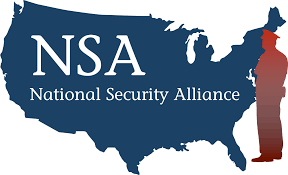
Training & Professional Development
Why Interactive Online Training Is Now Essential for Modern Security Guards
Russell Willmon
5 - minute read
The role of a security guard has evolved significantly in recent years. The rise of technology and heightened threat scenarios requires more specialized skills that can’t be adequately taught in a passive format.
Interactive, self-paced eLearning has become the gold standard in security guard training for a reason: it addresses today’s challenges, improves critical thinking and knowledge retention, and adapts to individual learning styles.
For the employer, it adds an extra layer of accountability, as they can see, from the back end, where their trainees are excelling and where they are struggling. Interactive training also provides a verifiable audit trail, an essential support in liability cases and lawsuits.
The alternatives – namely, classroom training or passive learning via videos and webinars – have more cons than pros.
While in-person classroom learning is great for interactivity and immediate feedback, it has significant limitations. Guards may miss classes for various reasons, fail to absorb certain concepts, or not receive the feedback they need to help them fully understand critical concepts. Many will pass anyway, only to be sent out into the world with gaps in their training. Clearly, this is not ideal.
Passive learning through online videos and webinars is equally troublesome. Here’s a typical scenario: a guard sits in his guard shack, presses “play” on a training video, and walks away for a patrol round. When they return, they answer a couple of quiz questions and get their certificate.
Unfortunately, the latter scenario is how most regulators envision online training—and this is precisely what Defencify’s interactive courses are intended to prevent.
What is Interactive Online Training?
So, how do we define interactive training, and what makes it different from other security guard training methods? Let’s drill down.
Interactive online training refers to a self-paced eLearning program that requires continuous learner engagement.
Modules are self-paced as they can be accessed anytime, anywhere, from almost any device. This allows learners to schedule lessons when it’s convenient for them, without taking time off work, traveling, or disrupting their regular schedule.
Interactivity is a key aspect of this type of learning. Lessons engage the learner by requiring responses at intervals throughout the module. These engagements are intended to reinforce the lesson and encourage the participant to apply the learning in a practical sense.
Built-in features include:
• Scenario-based exercises and branching logic
• Drag-and-drop or click-to-reveal activities
• Embedded knowledge checks and quizzes with immediate feedback
• Multimedia content requiring learner action to advance
• Controls that prevent skipping or fast-forwarding
• Automatic time-outs for inactivity
• Learning management system (LMS) tracking of learner performance on all quizzes, simulations, and modules
Essentially, the learner is required to make decisions, interact with the content, and apply knowledge in real time—not simply consume passive material, as would be the case with a YouTube video or a pre-recorded webinar that can be played in the background without supervision or oversight.
These features ensure higher knowledge retention and greater accountability. Learners will not advance to the next stage of the lesson until they have responded correctly.
By contrast, non-interactive training — such as a YouTube-style video followed by a basic quiz — offers no assurance that the student was present, engaged, or learned anything. It’s that legacy model that we are trying to evolve beyond at Defencify, and its benefits are already being seen.
Why Interactive Training is the Gold Standard in Security Today
Today’s security training needs far surpass those of decades past. The landscape is much more complex, threats are more sophisticated and nuanced, clients are more concerned than ever about avoiding incidents, and public tensions run high at the best of times.
Interactive training addresses these demands in several critical areas.
· Higher training standards boost client confidence. Clients appreciate well-trained security personnel and will often pay more for guards with niche training and certifications.
· Boost guard confidence during incident response. Security missteps, injuries, and lawsuits are overwhelmingly caused by human error, lack of experience, or poor training. When guards genuinely understand what’s expected of them, response times are significantly reduced and errors are less frequent.
· Reduced liability for the guard and the firm. Training must always include legal responsibilities, proper use of force, and de-escalation techniques. Interactive training enables scenarios to be played out during the lesson, helping guards put learning into practice responses in a low-risk environment. Conversely, watching a passive video does not encourage or enhance decision-making, and learners could easily forget or overlook the lesson in a high-stakes situation.
Reinforcing the value of interactive online training, many studies have shown that the approach is more effective for several reasons.
· Reduces the learning burden (68.75% vs. 4.69%)
· Increases learning interest (84.38% vs. 3.12%)
· Improves test scores by a significant margin
Mind you, these statistics reflect studies based on higher academic education, but the results jibe with findings across many industry models. Interactive tools encourage active participation in learning, better retention, and increased problem-solving capacity, resulting in a more meaningful learning experience.
Observations from the Front Lines
It’s all well and good to talk about the benefits of one method over another, but we see the results in action every day.
Our clients report higher guard retention rates, improved compliance, and greater consistency across complex business models such as national brands or security forces with hundreds or thousands of employees.
Here’s what they tell us:
· Guards are more confident about their responsibilities and take professional pride in their knowledge.
· Customer service complaints are significantly reduced because guards communicate more effectively and are more empathetic.
· Liability incidents are greatly reduced, but when they do arise, the firm has the data to prove its training program; therefore, legal issues are minimized.
· Guard turnover decreases significantly because guards feel valued, take pride in their work, and feel there is a future for them at the firm.
· Teamwork improves.
· The firm’s brand image and employer brand get a massive boost from all of the above.
· Training costs are much lower with higher overall training compliance.
· It’s easy to identify top talent to fuel the management and leadership pipeline.
· It’s also easy to pinpoint where some guards may need additional support or training because the training data reveals not just the scores but also how the learner progressed through the modules.
With all these advantages, you would think that online interactive learning would be the standard in our industry. However, states are still autonomous in their licensing requirements, and some do not require specific training or certification to become a security guard.
The Bottom Line on Interactive Online Guard Training
Until there is standardization, it’s up to each firm to decide which training system to adopt. We’re still lobbying for regulatory language and will continue to do so until the landscape shifts.
Interactive training requires the learner’s participation at every step, ensuring they cannot passively consume content while better aligning with modern adult learning principles and compliance requirements.
Explore our Academy Architect program to learn how your firm can establish an online interactive learning program tailored to your business needs.






